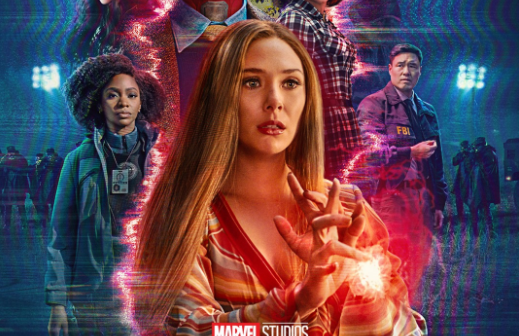By Alora E. Peters, Arts & Culture Editor
“WandaVision”—the latest installment of Marvel’s global cinematic phenomenon—is anything but your typical superhero flick.
“WandaVision” debuted as Marvel’s very first television series in January via the Disney+ streaming service. Taking place after the events of the 2019 blockbuster, “Avengers: Endgame,” the series follows super-powered characters Wanda Maximoff—played by Elizabeth Olson—and The Vision—played by Paul Bettany—as they attempt to live a normal life in the suburban town of Westview. Of course, as the series description teasingly reads, “Everything is not as it seems.”
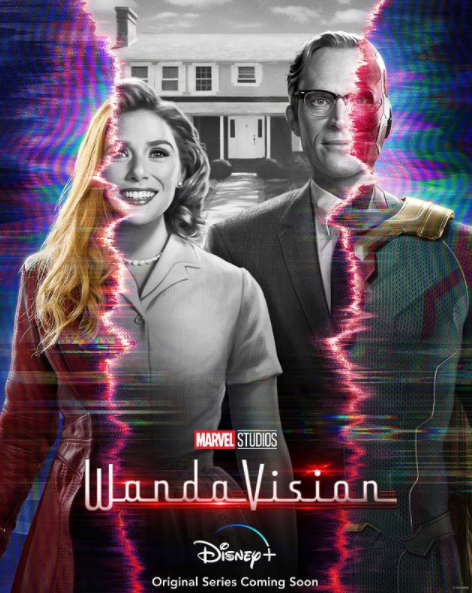
Unlike previous Marvel films, “WandaVision” does not simply rush into the conflict, flipping through orchestrated mega-battle sequences and the schemes of mastermind villains seeking world domination. In fact, for the majority of the series, there is very little action at all.
“WandaVision” starts out running as a parody of classic television sitcoms, complete with a studio audience laugh track. Wanda, Vision, and the cookie-cutter character neighbors of Westview must face ordinary, everyday problems, such as getting ready for a company dinner, visiting the doctor, and putting on a fundraiser for the local school.
Shifting timelines add an element of surrealism and suspense to “WandaVision.” Throughout the series, viewers—and the characters themselves—are not quite sure what is happening underneath the ideal facade of the sitcom.
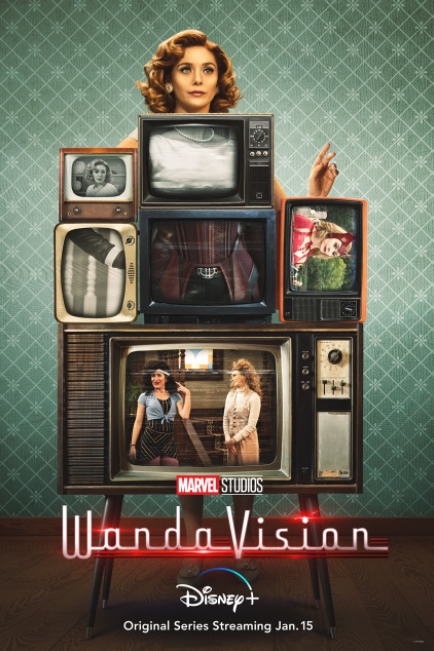
Of course, no superhero film would be complete without a climactic showdown between good and evil, and “WandaVision” does not disappoint. The finale pits Wanda and Vision against a classic comic book nemesis and features an abundance of stunning visual effects.
However, the slower build-up may leave fans of previous action-packed Marvel films disappointed, as they may not find much to appreciate in the smaller-scale drama of “WandaVision.”
Nonetheless, the quiet family life depicted here allows for character development that is not always permitted in a fast-paced theatrical premiere. In previous Marvel offerings, Wanda Maximoff and The Vision have played only supporting roles, but “WandaVision” explores their personalities in a more profound way.
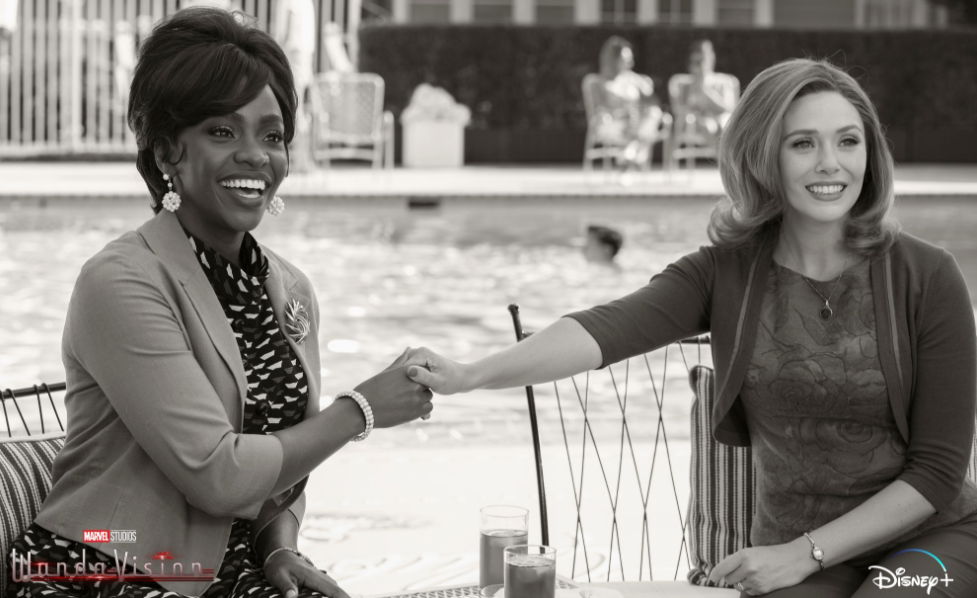
“WandaVision” also tackles some difficult subjects, such as dealing with grief in healthy and unhealthy ways. The series revisits Wanda’s traumatic past, and her emotional struggles after losing her parents, her twin brother, her homeland, and, finally, her beloved husband.
The most unique and interesting aspect of “WandaVision,” however, is that each episode installment is set in a different time period and is modeled off of the popular television sitcoms from each time period. Beginning in the 1950s, the series travels through six decades and introduces new backdrops, set pieces, costumes, hair styles, speech patterns, theme song, and even a decade-inspired soundtrack in each episode.
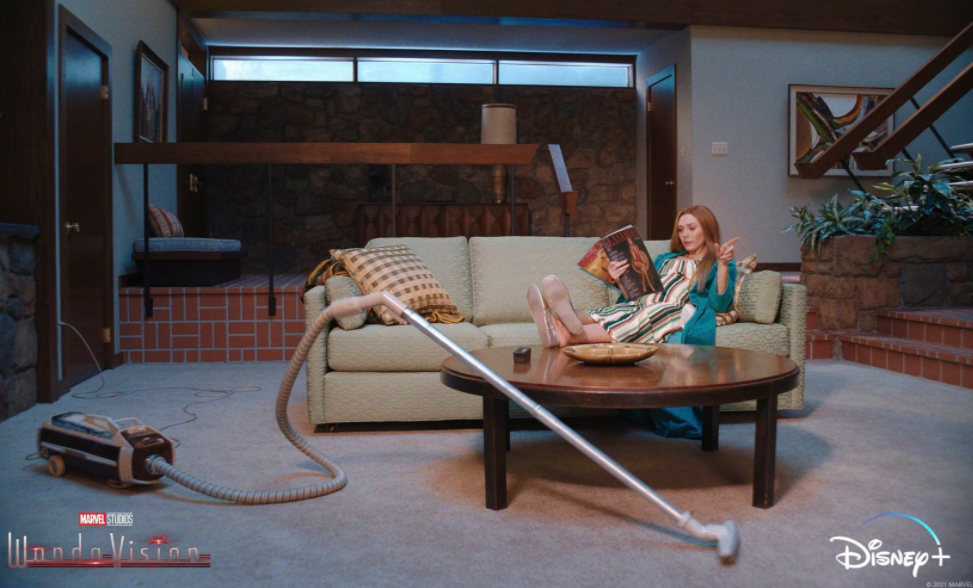
The amount of immersive detail—from the style of the plates and bowls, to the shape of the living room couch, to the color of the curtains, to the type of houseplants in Wanda and Vision’s home—that goes into the crafting of each decade is one of the major highlights of the series. Even the image quality and camera techniques change to reflect each decade. In the first episode of “WandaVision,” viewers are transported to an era of black and white film, grainy picture quality, and a square-framed screen, all reminiscent of the 1950s. Later, “WandaVision” invokes the 1970s with vibrant colors and fuzzy pixilation, before finally transitioning to high resolution in the modern-day episodes.
A final word must be given to the costumes—the hair, makeup, and outfits did a phenomenal job of transporting the viewer and the series directly into each time period. The superhero and supervillain costumes were also exceedingly well-done—notably, Wanda debuts a spectacular new version of her Scarlet Witch battle uniform. Costume, makeup, and cosplay enthusiasts can watch this show solely to enjoy the inventive wardrobe styles and transformations.
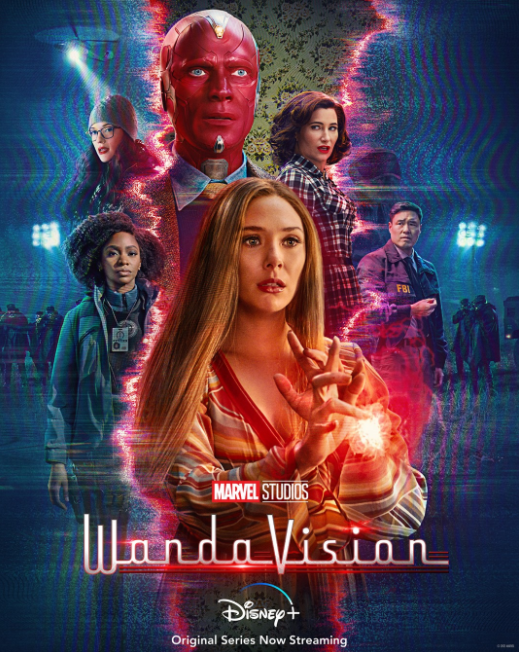
In conclusion, though the series may seem to start out slowly and confusingly, “WandaVision” is an intriguing and original take on Marvel’s superhero universe, with spectacular set and costume design. Now that all episodes are available for streaming on Disney+, “WandaVision” is a fun and enjoyable series to catch up on over spring break.


